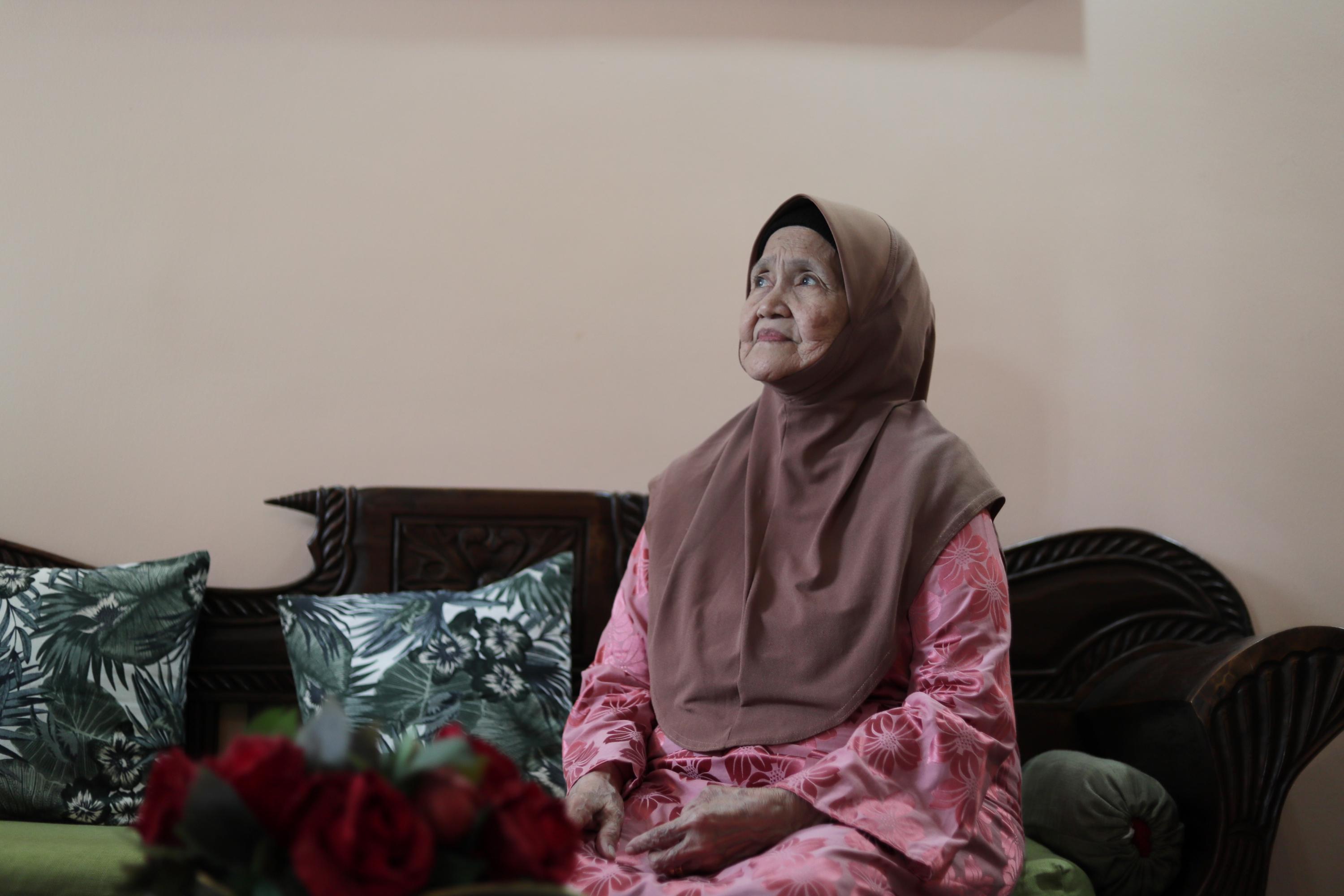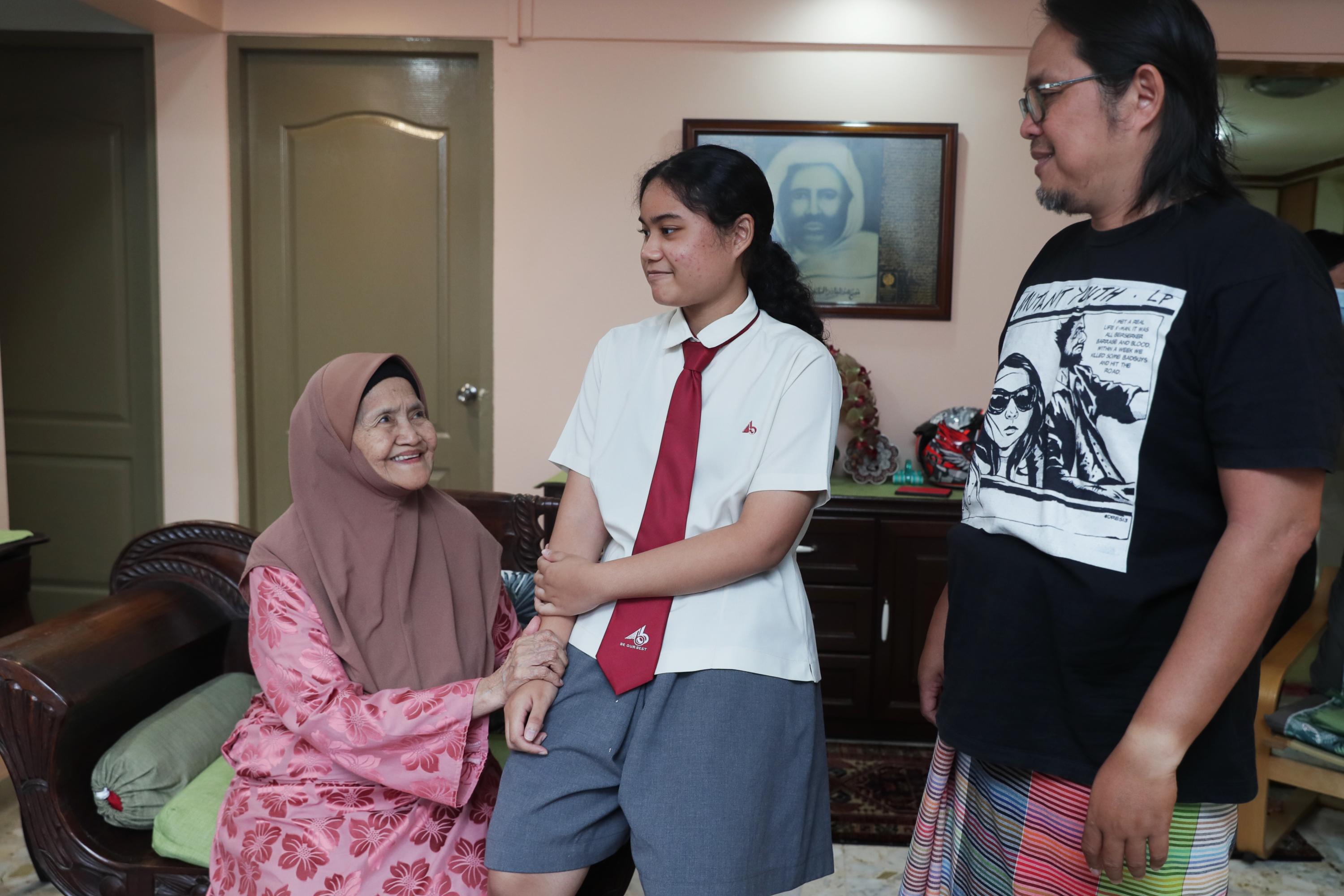'It was sizzling and turning': 82-year-old recalls bomb that dropped through roof during WWII
Sign up now: Get ST's newsletters delivered to your inbox

Madam Supijah Achmad was a toddler when the bomb fell.
ST PHOTO: KELVIN CHNG
Follow topic:
SINGAPORE - Forty years after the end of World War II in September 1945, a 0.5m-wide bomb-shaped hole still remained on the roof of a communal house in Everton Road in Outram Park.
Nobody had the will to fix it, and it had become a curious memorial to a time when Singapore faced almost daily air raids by the Japanese.
In the house, those who were old enough to understand were quickly introduced to it, and it attracted the young and old to now and then look upon it and reminisce.
Even when the ground got wet from the rain, those living there left it unthatched.
Until the 1980s, the house was a ponthuk, a Boyanese communal house, occupied by about 10 families, immigrants from Pulau Bawean in East Java, Indonesia.
Madam Supijah Achmad, 82, and her family lived there until 1985. She was a toddler when the bomb fell.
"This bomb fell onto the roof and landed on one of our neighbour's beds. It was turning and sizzling and we quickly called the soldiers in to retrieve it. Luckily, it didn't explode," she told The Straits Times in Boyanese.
"No one was in the bed at the time because we heard the sirens and we were all hiding under the staircase. I followed my grandmother. My mother had my little sister wrapped around her body with a towel."
Her son, Mr Darwish Sanosi, 50, who translated what she said for ST, was also brought up in the house, and the hole in the roof was a familiar sight to him.
"It's a tale, a legendary tale," he said, laughing. "Everyone just left it, I don't know why. It might be that they wanted to show it to the future generation."
The first air raid on Singapore was carried out by 17 Japanese planes just after 4am on Dec 8, 1941, and left 61 dead and 133 people injured. By January, there were two to three attacks daily, and it is said that more than 1,000 people died that month from the bombings.
As early as 1936, the British colonial government had formed a sub-committee on air raids and bombardment precautions, and had warned civilians to take cover when the warning sirens sounded.
But measures proved woefully inadequate by the time war came. Most people were clueless about the protocols to follow when the bombs fell, and bomb shelters were in short supply.
Madam Supijah's ponthuk chief determined what those living there came to call a "fortress" - actually a small space under a staircase near the front porch - where they would hide once the alarms went off.
It worked, miraculously. No one in the ponthuk died, although after the war, the traumatic events still led to Madam Supijah moving with her grandmother back to Pulau Bawean.
She eventually returned to Singapore, where she now lives in a Clementi flat.

Reflecting on the war now, she said it was the first time she was seeing Japanese people, whom she then regarded as more foreign than the British.
She largely stayed home during the war with her mother, except for trips to the market, during which she saw emaciated prisoners of war being flogged by the Japanese, and corpses tied up on trees to warn locals against defiance.
"I tried not to look the Japanese in the eye," she said. "I also thought the British were better than them. They treated the British soldiers terribly but after the Japanese surrendered, some of the British helped them."
This assessment was despite the slightly privileged position her family had enjoyed during the Japanese Occupation. Her father, who before the war worked as a chauffeur, became a driver for the Japanese, a job that came with certain perks, such as the rare bag of rice that the rest of the population was deprived of.
"Our parents would give us the rice and not eat any themselves. But rice was very rare. Most of the time, it was tapioca, tapioca, tapioca," she said.
Mr Darwish said his mother is usually reticent about the war, but would become garrulous whenever she sees or hears fly-bys on National Day.
For her, it brings back dark memories of the Japanese planes flying in formation over Singapore during the war, a sight usually followed by a trail of devastation left behind by the bombs they dropped.
Madam Supijah's granddaughter, Hani Nadia Mohammad Zin, 14, said the story of the bomb her grandmother told her had left her speechless.
She was tasked recently by her school to ask a survivor of World War II about their experiences.
"I guess I thought she had an ordinary childhood like everyone else. Most stories I had heard were about encounters with soldiers, but I didn't realise bombs were dropped so close to the houses."

